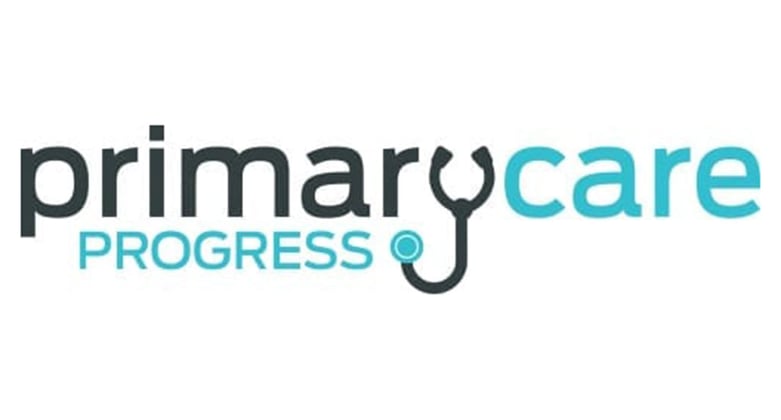
PRIMARY CARE PROGRESS: Images from the nonprofit organization's website, a valuable resource for med students interested in learning about the importance of primary care. Images: PrimaryCareProgress.org
The Association of American Medical Colleges (AAMC) predicts a major physician shortage in the USA by 2025 of 130,000 doctors, and primary care doctors continue to be in demand. For this reason, all students at American and Caribbean medical schools should know about Primary Care Progress (PCP).
Primary Care Progress is a national nonprofit network of “medical providers, health professional trainees, policy pundits, advocates, and educators,” with a goal of revitalizing the primary care workforce in the USA.
For the latest installment of our Transforming Primary Care series in the UMHS Endeavour, we look at what Primary Care Progress does, why the organization’s work is so important in the current U.S. health care environment, problems with primary care in America, and why the public and students alike should know about ways to transform primary care. In addition, we will discuss why students may wish to start a Primary Care Progress chapter at their school.
What Primary Care Progress Does
According to the Primary Care Progress website, the organization is a “home to all members of the primary care team- and anyone else- who cares about the future of primary care in this country.”
Primary Care Progress uses “strategic local advocacy that promotes primary care and transforms care delivery and training in academic settings.”
Primary Care Progress spreads a "reinvigorated vision of primary care," offering a grassroots approach to primary care transformation.

CLINICAL INNOVATION: Primary Care Progress assists with the tools needed to succeed in primary care. Image: PrimaryCareProgress.org
Primary Care & Current State of U.S. Health Care
The Primary Care Progress website notes that the current U.S. health care system needs work. “Care is too often disorganized, uncoordinated, and error-prone; payment systems reward volume, not value,” the website says, noting care often involves “15-minute encounters that leave neither patient nor provider satisfied.”
The UMHS Endeavour agrees. Anyone who has been to the doctor in the metro New York City area, for example, knows how difficult it is to actually find a primary care physician, even with “good” health insurance, and many have stopped taking insurance entirely and only accept cash.
Good primary care physicians, from the UMHS Endeavour’s experience, sometimes work in understaffed, busy health clinics, but have little time to spend with patients.
But the problem goes far beyond a time issue. As Primary Care Progress notes, some of the challenges facing primary care include “active discouragement, isolation, inadequate exposure to promising new models of primary care delivery, and outdated curriculum that leave them ill-prepared to work on interprofessional teams.”
This makes it that much tougher for patients to get the care they need from primary care providers.
Roots of Primary Care Progress
Primary Care Progress began in 2010. The organization’s website notes that a group of primary care trainees nationwide “connected over the same concern: the marginalized status of primary care at medical and other health professional training schools around the country.”
The nonprofit was originally founded by students and trainees from Harvard Medical School and the University of California, San Francisco, but the UMHS Endeavour hopes that all students from American and Caribbean medical schools that plan to work as primary care physicians in the USA will get involved with Primary Care Progress to enrich primary care training.
Primary Care Progress is currently an interprofessional network of 30 chapters, with thousands of members in the USA.
Grassroots Approach
The Primary Care Progress website notes the organization “engages clinicians, trainees and educators from the various professions and disciplines delivering primary care (Family Medicine, Pediatrics and Internal Medicine).”
Primary Care Progress provides primary care supporters with the following:
- Advocacy Training
- Leadership Development
- Media Attention
- Tools and strategic support to help primary care professionals reach goals
Start a PCP Chapter at Your School
Primary Care Progress has chapters at medical schools nationwide. The organizations website notes goals of the chapters include:
- Bringing together interdisciplinary members of a local primary care community
- Working together to promote the value of primary care and create opportunities for clinical innovation
- Taking action on local campaigns to improve primary care training and delivery
Chapters work with PCP Field staff, identifying and planning goals/strategies for each school.
“Examples include receiving academic credit for a Primary Care Innovation Collaborative (PCIC), working with a university hiring committee to make sure that two family medicine faculty positions are filled, and creating rotations in Patient-Centered Medical Homes,” the website explains.
Chapters receive various means of support from Primary Care Progress on everything from chapter development to “community activity toolkits, seed funding, and leadership trainings.”
Primary Care Progress offers many forms of useful guidance, including webinars.
Students interested in starting a Primary Care Progress chapter at their school should visit https://www.primarycareprogress.org/student-programs/
Primary Care Progress TOM Talk: Innovation in Primary Care
Georgetown University (YouTube Video)
About UMHS:
Built in the tradition of the best US universities, the University of Medicine and Health Sciencesfocuses on individual student attention, maintaining small class sizes and recruiting high-quality faculty. We call this unique approach, “personalized medical education,” and it’s what has led to our unprecedented 96% student retention rate, and outstanding residency placements across the US and Canada. UMHS is challenging everything you thought you knew about Caribbean medical schools.

Scott is Director of Digital Content & Alumni Communications Liaison at UMHS and editor of the UMHS Endeavour blog. When he's not writing about UMHS students, faculty, events, public health, alumni and UMHS research, he writes and edits Broadway theater reviews for a website he publishes in New York City, StageZine.com.















